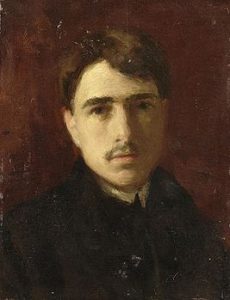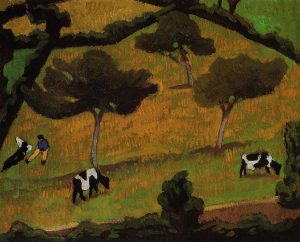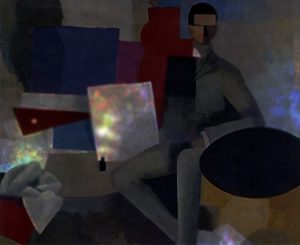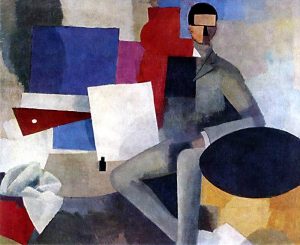Roger de La Fresnaye was born on the 11th of July in 1885 in Le Mans, France.
1885 - 1925
Roger de La Fresnaye
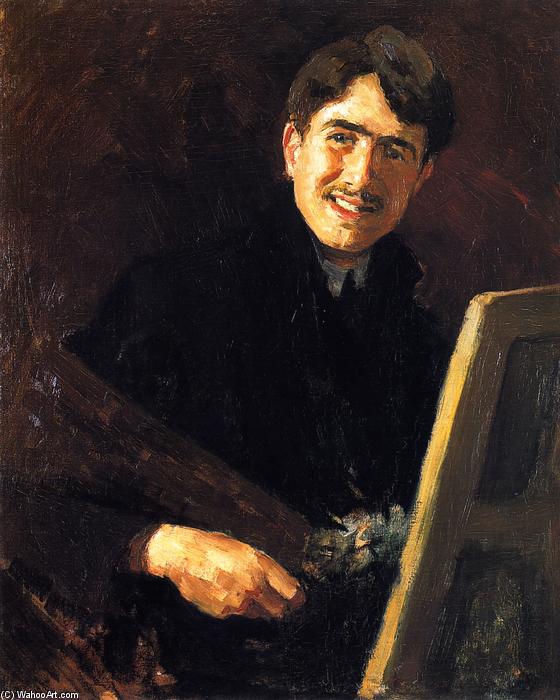
description
Synopsis.
A French artist and sculptor whose works are known all over the world as the best examples of Cubism in painting.
Roger de la Fresnaye was born in a wealthy aristocratic family in Le Mans Department of Sarthe. His father was a soldier and gave his son a classical education. As a young man, he studied at several Paris art schools, including the School of Fine Arts and the Ranson Academy in Paris. One of the teachers of de la Fresnaye was the school’s founder, artist Paul Ranson, as well as P. Serusier and M .Denis, who influenced the early Symbolist style of the artist.
A student of the Ranson Academy, Roger de la Fresnaye worked in a softer and more relaxed version of Cubism than his colleagues, preferring recognizable forms of complete abstraction. Throughout his rather short life, the artist participated in several exhibitions at the Salon of Independent and at the Autumn Salon, was a member of “Golden Section”, the group of Cubists, and presented his paintings at the famous exhibition of abstract artists at the gallery of La Boétie in Paris. Together with his friends, he designed the famous “Cubist house”, presented at the Autumn Salon of 1912. For this project, which was a mock-up of a whole apartment house, Roger de la Fresnaye created wooden things, interior doors, unique watches, candlesticks and other decorative and interior elements.
Key ideas:
– Roger de la Fresnaye worked in his own bright style, based on the Cubist division of the form, geometrization of objects and a wonderful sense of color.
– In his work, the artist wanted to go beyond the monochrome or muted tones of the Cubists towards a more radical use of the color palette, and he did it. Like his companion Robert Delone, Fresnaye used open red, blue and yellow, boldly combining them in large-format canvases depicting people, landscapes and still-life objects.
– The art of de la Fresnaye can be called the most realistic among the Cubists. The artist’s paintings do not investigate shape and space, like the works of Picasso and Delaunay, but rather resemble a colorful collage of separate color planes that preserve their integrity and the recognizability of the depicted object. Unlike other Cubists, he never departed from the real appearance of things, but merely simplified them, replacing complex forms with simple geometric figures, and subtle nuances of colors with large local spots. At the same time, the Fresnaye’s original interpretation of Cubism has a shade of lyricism and the spiritual elevation of the author.
– Although the paintings of la Fresnaye were of great importance for the popularization of Cubism and the expansion of its influence immediately before the First World War, he later abandoned Abstract art and became one of the most influential supporters of the traditional Realism of France.
– In the last years of his career, the artist painted portraits and scenes from life in a realistic manner. A vivid example of such a work is the “Portrait of Guynemer”, created in 1923. In addition, during his service at the front, de la Fresnaye created a series of figurative drawings depicting soldiers’ life in the field.
1885
1910
1912
1914
1918 - 1924
1925
The birth of the artist
He took part in the Salon of Independent and in the Autumn Salon
He took part in the Salon of Independent and in the Autumn Salon, attended the sculpture courses of A. Mayol. At about the same time, the young artist met Raymond Duchamp-Villon, who introduced him to the Cubist circle and introduced him to the rest of the Puteaux group. From this time, the style of de la Fresnaye changed towards Cubism, based on the art of Cezanne and Picasso.
Became one of the participants of "Golden Section" exhibition in Paris
Became one of the participants of “Golden Section” exhibition in Paris, where the works of Cubists and other representatives of Abstract art were presented. This exhibition was of great importance for contemporary painting and influenced its further development. In the same year, the artist worked on the creation of so-called “Cubist house” – a large-scale model of a furnished residential building, on which he worked together with brothers Villon and André Breton and other artists.
From April 20 to May 3, the first and only personal exhibition of de la Fresnaye took place in the Paris gallery of Leveque
From April 20 to May 3, the first and only personal exhibition of de la Fresnaye took place in the Paris gallery of Leveque, where he presented 47 paintings, 16 drawings and 12 watercolors. In the same year, the artist participated in the Salon of Independent, where he demonstrated his large paintings “Conquest of the Air” and “Seated Man”, created in 1913. These two works aroused positive reviews and became the most famous and recognizable works of the artist. September 7, 1914, Fresnaye was enlisted in the infantry regiment and went to the front of the First World War.
Beginning in 1922, he did not work with oil paints, drawing only pencil sketches and watercolors
During the service, he experienced health problems and was fired from the army with the diagnosis of tuberculosis. After a long treatment in the sanatorium of Beaulieu in Camboa, and afterwards in Durtola, the artist returned to Paris in 1919. After spending the summer in the capital, de la Fresnaye moved to the Grasse commune in the south-east of France, near Cannes. On the Cote d’Azur he was accompanied by J. Gumpert, his faithful friend. For several years, the artist’s health improved, then worsened again. Beginning in 1922, he did not work with oil paints, drawing only pencil sketches and watercolors.
The death of the artist
He passed away on the 27th of November in 1925 in the city of Grasse, Cote d’Azur, France.
Roger de La Fresnaye
On Artist
flow
Symbolism
Post-Impressionism
Expressionism
friends
Jean Louis Gampert
Juan Gris
Fernand Leger
artists
Paul Ranson
Maurice Denis
Paul Serusier
Paul Gauguin
Paul Cezanne
Pablo Picasso
George Braque
Aristide Mayol
By Artist
flow
Surrealism
Neoplasticism
friends
Jean Louis Gampert
Juan Gris
Fernand Leger
Raymond Duchamp-Villon
Jacques Villon
Albert Gleze
Robert Delone
artists
Joan Miro
Paul Klee
Pete Mondrian

